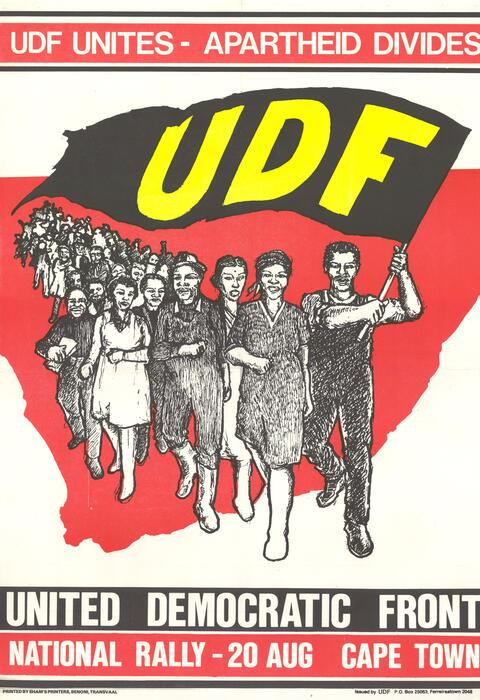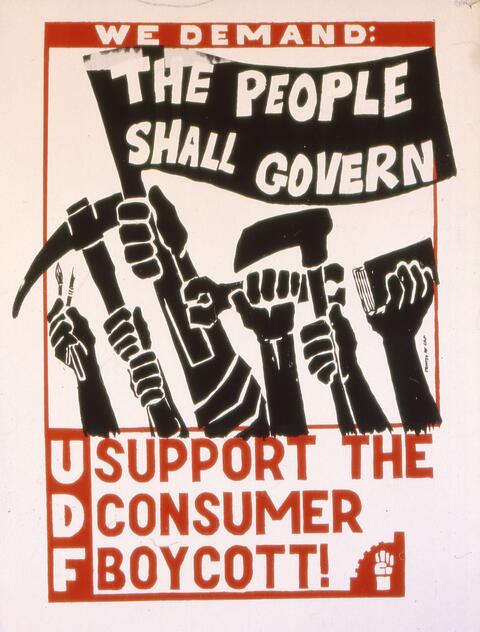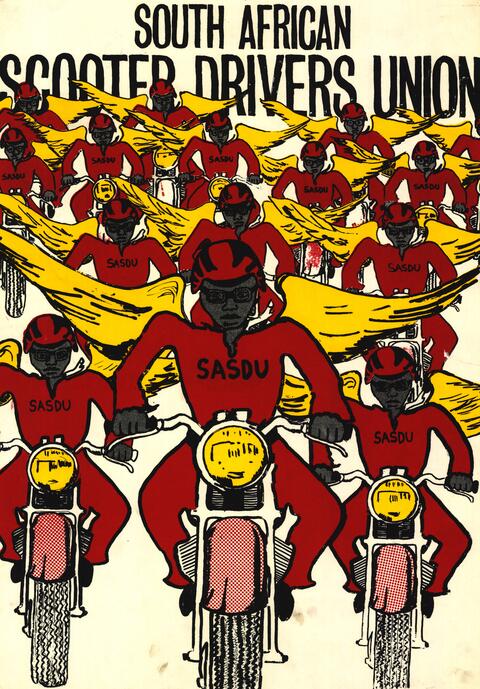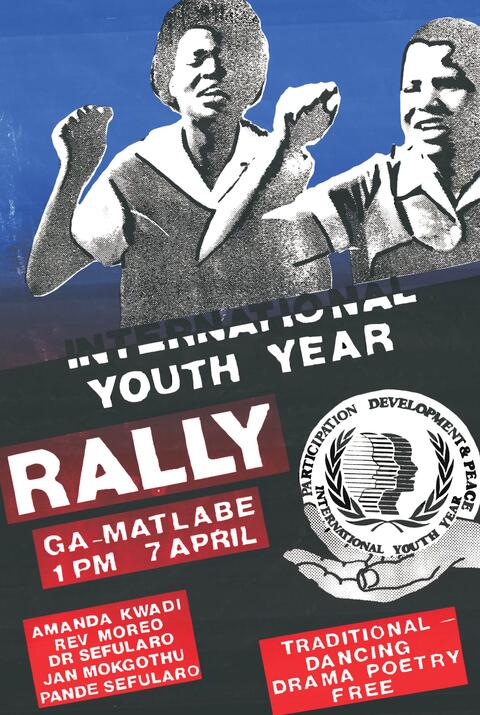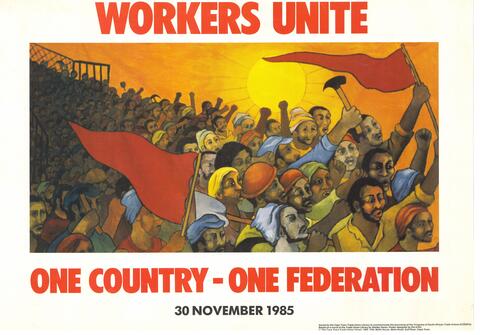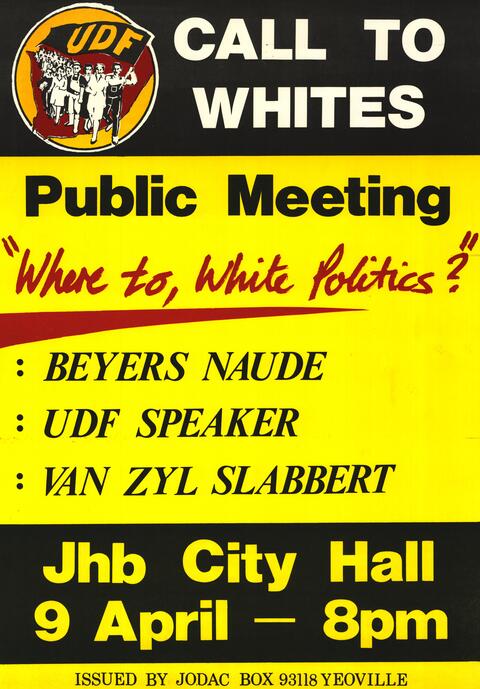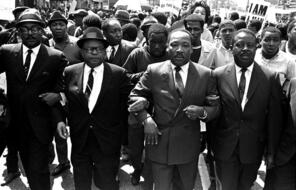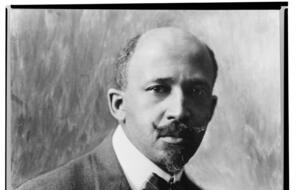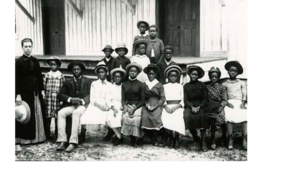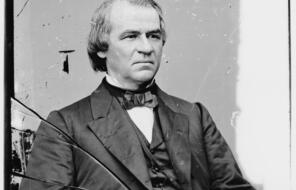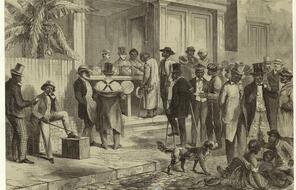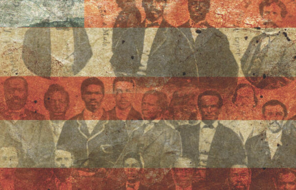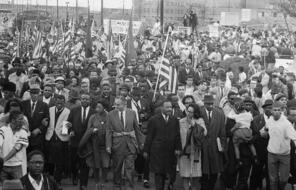Posters from the Freedom Struggle in the 1980s
Subject
- History
Language
English — USUpdated
Mourners Carry UDF Banner During Mass Funeral
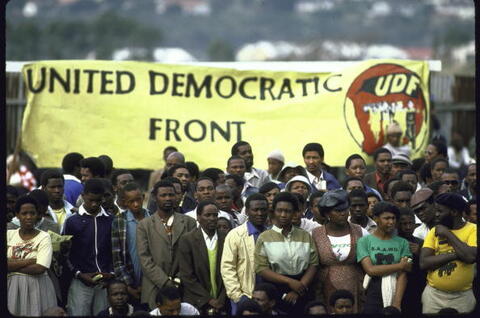
Mourners Carry UDF Banner During Mass Funeral
A group of mourners carry a United Democratic Front Banner during a mass funeral for 18 black South Africans killed during the unrest in Duncan Village near East London, South Africa.
All popular movements for change—from the US civil rights movement to the European anti-nuclear movement—have needed to mobilize increasing numbers of people in order to become influential and create the change they want. The first priority is to show people that there is already action for change and then to show them how they can participate. Bold, eye-catching posters were vital to this work in the period before internet use and cell phones became widespread. Posters were a vital form of social media. They emboldened people to join, and they also “broadcast” the reality of mass resistance at a time when the South African government severely censored all radio, TV, and newspapers.
By the 1980s the anti-apartheid movement had grown to include thousands of organizations all across South Africa, organizations that increasingly drew together to achieve one common goal: democracy. These groups ranged widely, including trade unions, women’s organizations, committees of the mothers of detainees, the “end conscription” campaign (which opposed the military draft imposed on all white men), faith-based organizations, student movements, consumer boycott committees, squatters’ committees, associations of lawyers/teachers/doctors, and many others. This diversity existed because apartheid touched every part of every person’s life. By the mid-1980s, most of these organizations joined together under one huge alliance, the United Democratic Front (UDF), which coordinated and strengthened the democratic movement.
Included here are posters representing six distinct aspects of the struggle. In addition, the international anti-apartheid movement created its own posters to educate and mobilize people in countries worldwide to break their governments’ and businesses’ ties with apartheid.
Those who made and distributed the posters risked imprisonment, as their work encouraged people to dare to be heard, to march, to strike, and to lead. Most of the artists had no formal training. The technology was simple, cheap, and fast, often resulting in posters that had a rough-hewn look. Colors were often carefully selected to indicate affiliation with particular organizations. For the ANC, the colors were green (for land), black (for people), and gold (for wealth); for COSATU, the trade union movement, they were red (a fighting color), black (for the people), and yellow (for gold/wealth).
Posters were just one of many forms that cultural resistance took in this period. Among the other widely used forms were songs, chants, dance (the toyi-toyi), clothing, banners, flags, and graffiti, all publicly calling for people to participate in making freedom a reality.
Connection Questions
- Notice which organizations made each of these posters and which issues and events each portrays. Do any of the organizations or issues surprise you or show an aspect of the freedom struggle that you had not expected? Think about why each group wants to create a free South Africa.
- Posters employ a visual vocabulary. Imagine that you lived in South Africa during the 1980s, a decade of intense mobilization and struggle—and fear of the government. Visually, how did the posters encourage people to become activists? If you saw these posters on the street or inside a community hall, which would grab you and why? Look especially for the design elements that make a poster “pop.” Then share your observations with your classmates, if possible.
- View each poster by itself. In the UDF poster, which people are in the forefront? Who else is represented? In the consumer boycott poster, what do the hands hold? In the poster aimed at whites, notice that a question is being asked rather than a call to action being made. Why might the designers have chosen this approach?
- Now choose an issue that is important to you that you would like “broadcast” through social media. Working individually or with a partner, create a compelling poster design (or video) that includes words/phrases that frame or highlight the issue. Then, following the practice common in South African political movements in the 1980s, show your design to your classmates, inviting comments to enrich and strengthen it.
How to Cite This Reading
Facing History & Ourselves, “Posters from the Freedom Struggle in the 1980s”, last updated July 31, 2018.

